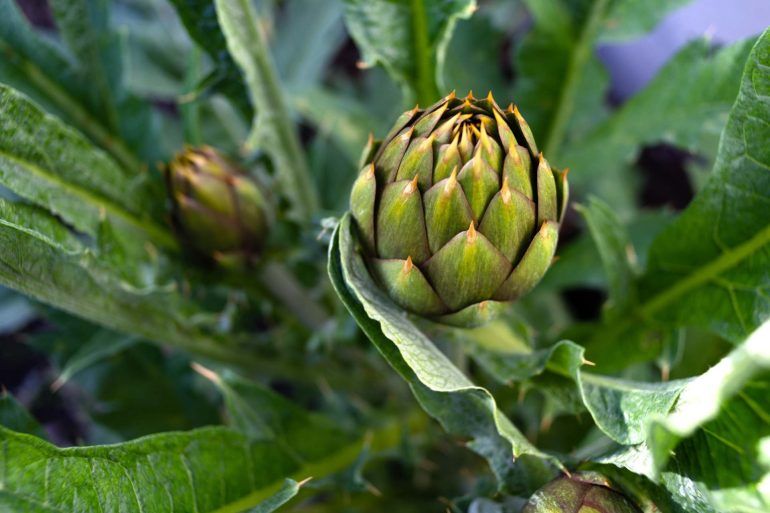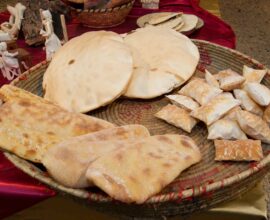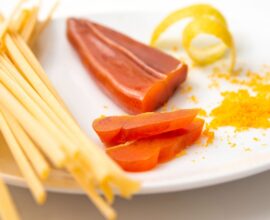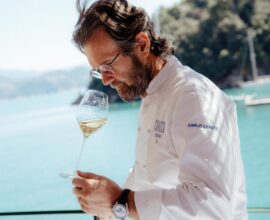Sardinian prickly artichoke PDO: history, fun facts and uses of a food excellence
Discovering Sardinian prickly artichoke PDO, a flagship for the rich agricultural heritage of this island
Sweet but bitter, tender but crunchy, aromatic and intense, Sardinian prickly artichoke perfectly embraces the profoundly authentic soul of the island, its land of origin.
Learning about the richness of the Sardinian territory, discovering its hidden wonders, the customs and traditions handed down from generation to generation, is truly a lifelong journey which, perhaps, never ends. A key stage of this trip across tradition is certainly the discovery of the rich food and wine heritage of this island, hanging between sea and sky, often strongly related to the natural elements that still rule it.
Among the best products representing the essence of the Sardinian territory there are surely the saffron, the “red gold” cultivated since the Phoenicians age with a strong and intense taste, just like the tenacious and proud soul of its inhabitants; the multiple types of aromatic honey, of which exist as many varieties as the plants of the Mediterranean scrub turning the island green; or Sardinian garlic, as versatile as it is valuable. But there’s another top product that this land can boast: that’s the Sardinian prickly artichoke PDO.
It is a native variety of the species Cynara cardunculus, with a long conical shape and streaked leaves with typical and graceful violet shades and long yellow thorns at the far ends, whose harvest truly becomes a means of consolidating a bond of men and land lasting for centuries, that’s certainly not going to end, at least in the short term.
The cultivation of this unique variety of vegetable, which in the Sardinian language takes different names according to the area of reference, such as Canciofa in Campidano, Cartzofa in Logudoro, Scalciofa in Gallura and Iscaltzofa in Sassari, is in fact closely related with the particular features of the island’s territory and its unique micro-climate, with the waterways that embrace the valleys and the plains where it is cultivated, but especially with the particular cultivation and harvesting techniques that have gradually been refined after its growing diffusion, and which therefore make human skills and experience an essential element for the survival of the prickly artichoke over time.
It is no coincidence that in February 2011 the Sardinian prickly artichoke was awarded the prestigious Protected Designation of Origin (PDO) mark, thus registered with the European Community and designed to guarantee both the high quality of this product and the protection of the rich know-how which seals its bond with a specific territory and its people, hindering potential counterfeiting.
Sardinian prickly artichoke, a story lasting for centuries
To fully appreciate the goodness of the Sardinian prickly artichoke, it is necessary to close your eyes, breathe in its intense and aromatic scent, and let yourself be transported back in time, following the traces of the ancient Phoenicians, the people who imported the cultivation of this vegetable on the island. As a matter of fact, the harvesting of artichokes was already represented on the tables of the ancient Egyptians and then widespread on Greek ones too, as testified in Theophrastus’s Historia plantarum (“The history of plants”).
Over the following centuries, in fact, the variety known as Spinoso Sardo, with its sweeter taste and fleshy consistency, free of thorns and internal ‘beard’, has never ceased to represent one of the key economies of the Sardinian agricultural sector, to the point of being mentioned since mid-18th century in multiple literary works, including “Agriculture of Sardinia by Andrea Manca dell’Arca” (1780), where one can read that “thistles and artichokes are good for the stomach, so the thistle is considered one of the most useful plants in the garden. In Sardinia the thistle it’s the plant and the artichoke is the flower and fruit that it produces”; but also “the rustic life of Sardinia reflects in its language” by Max Leopold Wagner (1921) and the edition of the “Historical, statistical-commercial and geographical gazetteer of the states of H.M. the King of Sardinia” by Vittorio Angius (1836), which described the agricultural economy of Serramanna in the first half of the 19th century, mentioning the artichoke as a “source of profit for the settlers of the vegetable gardens”, then becoming object to a sort of insurance tax that farmers had to pay for the security of artichoke fields.
Since the second half of the 20th century, the popularity of the Sardinian prickly artichoke has gone beyond regional borders, establishing itself as a true delicacy acknowledged and loved throughout the world, without ever losing its unique bond with Mother Earth, impossible to cut even for purely logistical reasons.
In addition of being guaranteed by the certification of protected origin, establishing some strict criteria regarding the cultivation and harvesting of this vegetable (e.g., the transplant must take place between the second half of June and the beginning of August, while the harvest must be carried out exclusively by hand between September and May; moreover, the artichoke contains at least 2.5% carbohydrates, as well as traces of polyphenols, sodium and iron), the presence of the prickly artichoke PDO in Sardinia is strictly related to the particular features of the soil and climate of the coastal areas in the territories legally registered for its production (specifically, locations like Cagliari, Carbonia-Iglesias, Oristano, Nuoro, Ogliastra, Sassari, Olbia-Tempio and Campidano).
Prickly artichoke, a unique and versatile product plenty on beneficial properties
Spinosi Sardi PDO are not just like common artichokes: they are part of their territory, hence they have unique characteristics, which reflect the very nature of the land in which they were grown, including its apparent contradictions.
Sardinian artichokes have a typical pointed, conical, compact and long shape, presenting delicate bluish-purple shades on the large green leaves, which end with yellow thorns, just like an armor that encloses a sweet and complex heart.
In the mouth, these vegetables taste sweet and bitter at the same time with their full-bodied and intense flavor, a tender and fleshy but even crunchy consistency, and their iconic aromatic scent. The result is a balanced product, easily recognizable and simply irresistible, especially in combination with other Sardinian food excellences, especially pecorino cheese, bottarga and Vermentino PDO, a dry and fresh white wine with an intense aroma of floral notes and citrus fruit, produced exclusively in the historic region of Gallura.
The magic of this magnificent product, anyway, doesn’t end there. Sardinian prickly artichoke, in fact, has notable beneficial toning, detoxifying and hepatoprotective properties for the body. It is in fact a powerful mine of polyphenols, antioxidants capable of effectively counteracting the action of free radicals responsible for premature cellular ageing, as well as phenolic compounds, among which cynarin stands out, a bitter substance contained mainly in its leaves and stems with a strong gallbladder stimulation action promoting the emptying of bile. The amount of fiber is very important as well (around 5.5% of the edible part), promoting the proper functioning of the digestive processes and thus counteracting bloating and constipation.
In short, Sardinian prickly artichoke is a true gift from the Earth to respect and value, a top product capable of telling a vivid story of the whole Sardinian cuisine heritage.
All the taste of Sardinian prickly artichoke at Forte Village Resort
An ingredient as simple as difficult to put into words; words that never seem to be enough to fully describe the unique flavor of this Sardinian excellence, its attachment to the land, which becomes more and more vivid bite after bite. The best way to approach the Sardinian prickly artichoke, in fact, refers to the involvement of multiple senses by smelling it, touching it, and tasting it putting that under your teeth (which fortunately is quite simple, as this is a key ingredient of many Sardinian recipes).
Also excellent raw, or in salads, all you need to do is remove the outer leaves and season it with good olive oil and, why not, some flakes of Sardinian pecorino cheese: the best way to find yourself experiencing an explosion of typical Sardinian flavors and aromas right in your mouth. At the same time, its balanced and slightly sweet taste, due to the high carbohydrate content, yet bitterish at the same time thanks to the presence of polyphenols and cynarin, perfectly matches with more elaborate dishes, such as risottos, fried finger food, savory pies, ravioli, sauces or simply as a side dish with lamb or bottarga.
The ideal place where to indulge in the pleasure of tasting these dishes is the Forte Village Resort in Santa Margherita di Pula in the province of Cagliari, an award-winning five-star facility immersed in the lush Mediterranean scrub, a few steps from the crystal clear waters of some of the most beautiful beaches in South Sardinia.
The Resort hosts a vast range of gourmet restaurants, including the prestigious Terrazza San Domenico managed by the starred chef Massimiliano Mascia or Forte Gourmet and Belvedere by Giuseppe Molaro just to mention a few, which moving on the fine line that separates tradition and experimentation aim to maximize the power of local ingredients, including the precious prickly artichoke, in full respect of their most authentic essence.
Do you want to delight your palate with the delicious Sardinian prickly artichoke PDO and experience a fairytale holiday in an authentic paradise? Discover the Forte Village Resort in Sardinia






